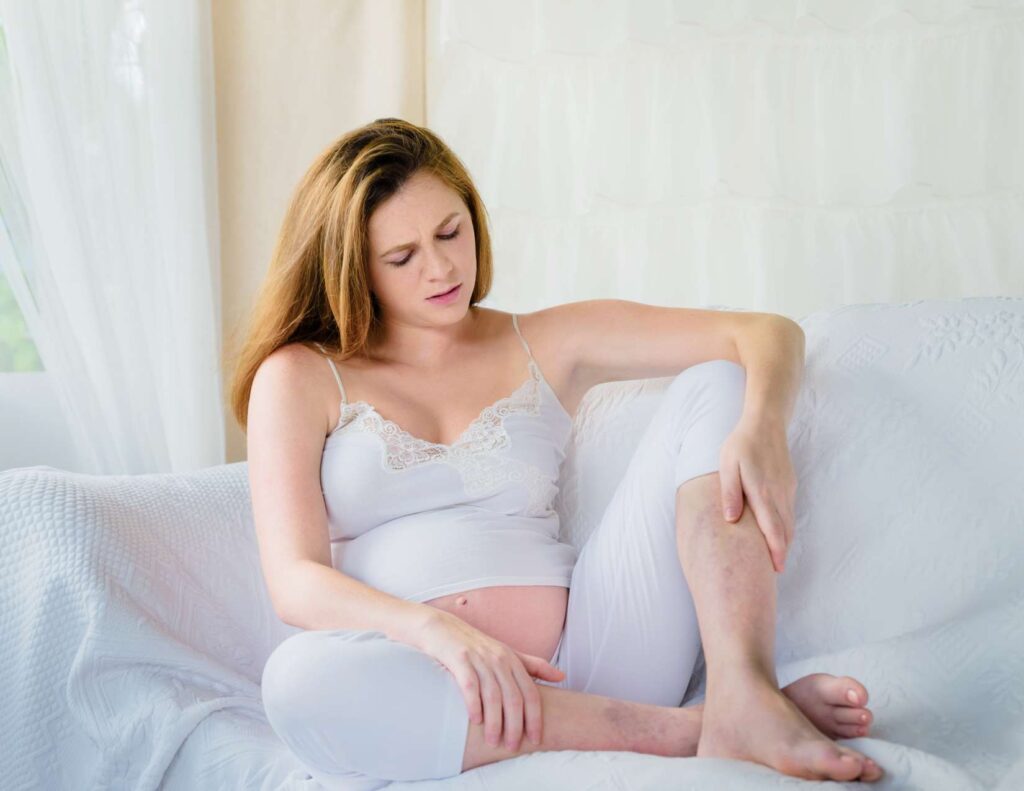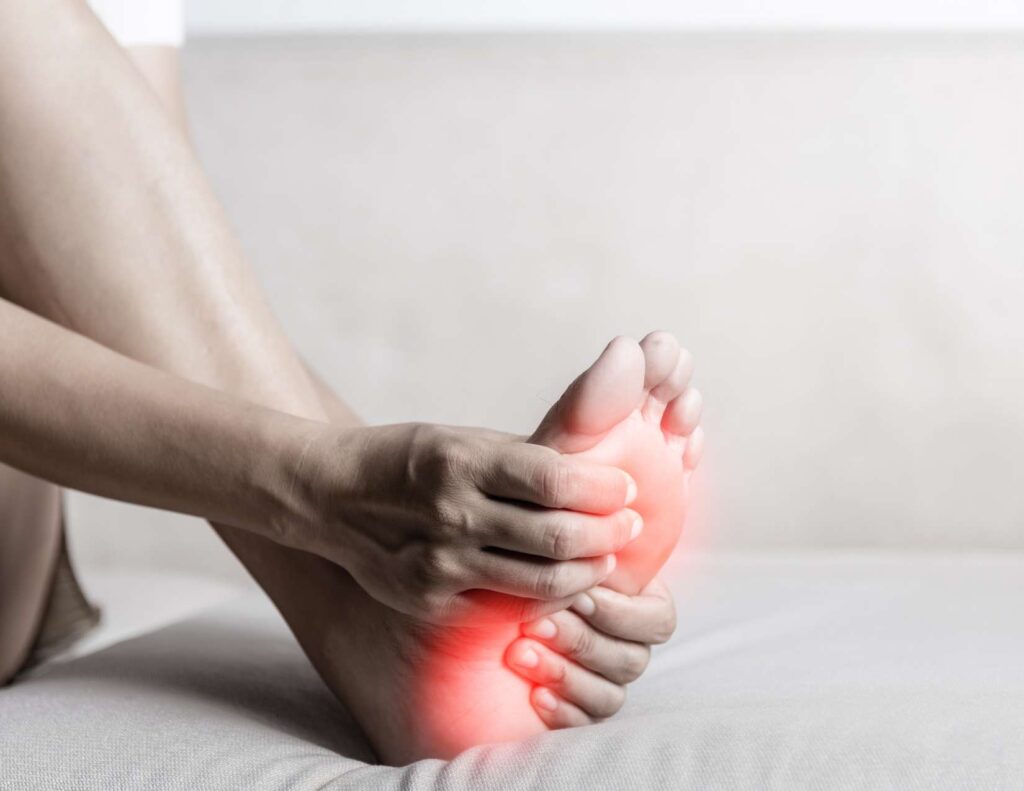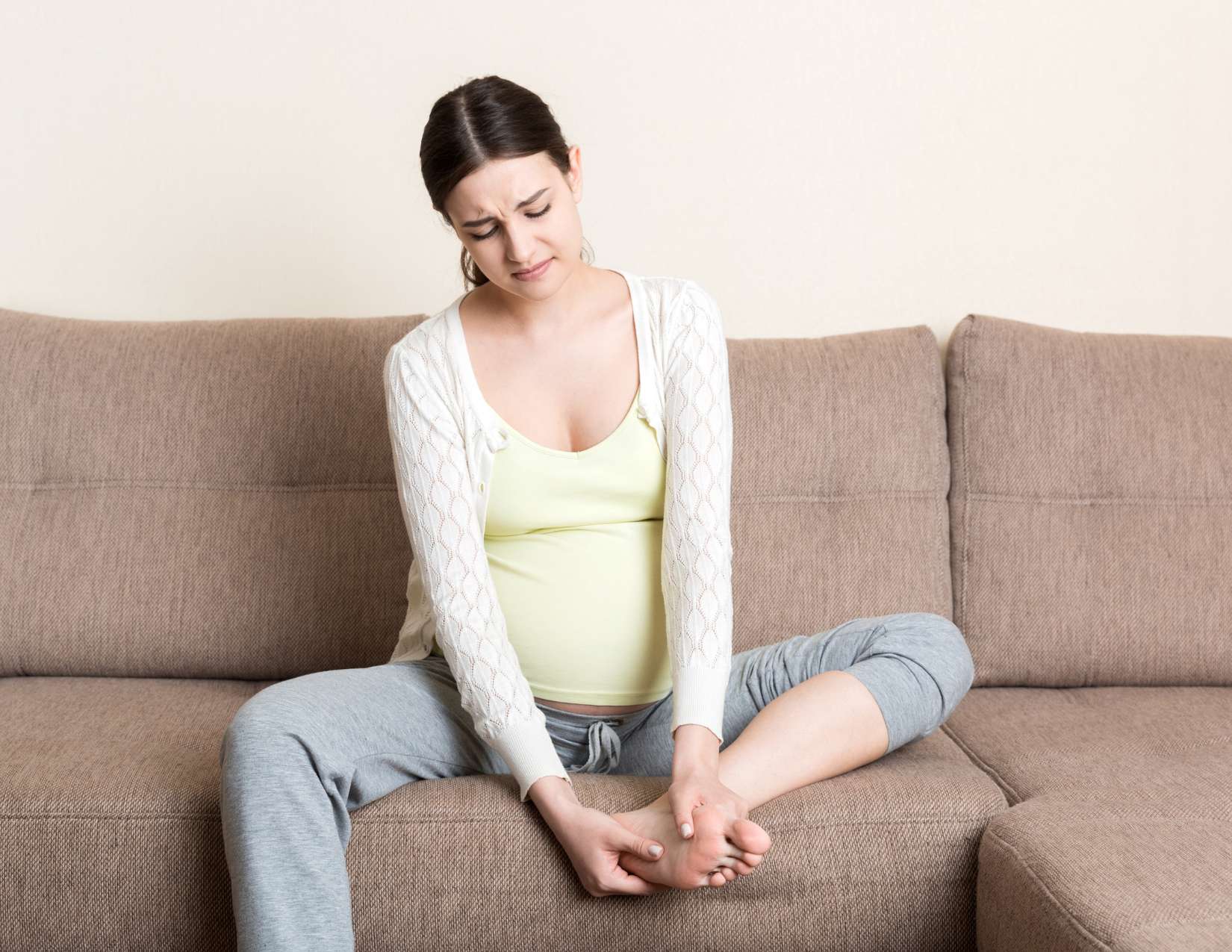The Ultimate Guide to Alleviating Heel Pain During Pregnancy
Navigating through the journey of motherhood can be joyous and rewarding, but it’s not without its challenges. An unexpected hurdle for me was to face the discomfort of heel pain during pregnancy. From that first twinge in the morning to the nagging ache at the end of the day, heel pain can cast a shadow over this special time. But don’t let this discomfort dampen your spirit.
Welcome to “The Ultimate Guide to Alleviating Heel Pain During Pregnancy”. This comprehensive guide is designed to empower you with knowledge and practical solutions to manage and minimize heel pain. Let’s take the first step together to understand the causes and explore effective remedies so you can continue to enjoy this incredible journey, pain-free.
Table of Contents

Understanding Heel Pain During Pregnancy
During pregnancy, many women experience various physical discomforts, and one common ailment is heel pain. As a mother of three myself, I understand firsthand how challenging it can be to deal with this type of pain while also navigating the many other changes happening in your body.
Heel pain during pregnancy is often attributed to the weight gain and postural changes that occur as your body adjusts to carry the growing baby. The extra weight puts increased pressure on the feet, leading to strain on the ligaments and muscles in the heel. Additionally, hormonal changes during pregnancy can cause the ligaments to become more relaxed, leading to further strain on the feet and other parts of the body such as the low back and neck.
These changes in such a short amount of time can lead to flat feet, varicose veins, fluid retention and an increase in foot size. Throughout pregnancy blood flow and blood volume increases, This can lead to blood vessels swelling in the feet, which can cause a feeling of heaviness, especially in the third trimester.
A scientific study revealing that, “Pregnancy appears to be associated with a permanent loss of arch height and the first pregnancy may be the most significant. These changes in the feet could contribute to the increased risk for musculoskeletal disorders in women.”
Causes of Heel Pain During Pregnancy
There are several factors that contribute to heel pain during pregnancy. One of the primary causes is the natural weight gain, which puts pressure on the feet and causes the plantar fascia, a ligament that supports the arch of the foot, to stretch and become inflamed. This inflammation can lead to a painful condition called plantar fasciitis.
Another contributing factor is the hormonal changes that occur during pregnancy. The hormone relaxin, which is responsible for relaxing the ligaments in the pelvis to accommodate the growing baby, can also affect the ligaments in the feet. This increased laxity can lead to instability and strain on the feet, resulting in heel pain.
Furthermore, the changes in posture that come with pregnancy can also contribute to heel pain. As your body adjusts to accommodate the growing baby, your center of gravity shifts, causing you to modify your gait. This altered walking pattern can put additional stress on the feet and exacerbate heel pain and other foot conditions.
Common Misconceptions About Heel Pain During Pregnancy
There are several misconceptions surrounding heel pain during pregnancy that can cause confusion and potentially delay effective treatment. One common misconception is that heel pain is just a normal part of pregnancy and should be tolerated. While it is true that many pregnant women experience foot discomfort, severe or persistent heel pain should not be ignored. It is important to seek proper treatment to prevent further complications.
Another misconception is that wearing high heels can alleviate heel pain. In reality, wearing high heels can actually exacerbate the problem. High heels alter the alignment of the foot and increase pressure on the heel, leading to increased pain and discomfort. It is advisable to opt for supportive and comfortable footwear instead.
Lastly, some women believe that resting and avoiding physical activity is the best way to alleviate heel pain. However, staying active and engaging in exercises specifically targeted at strengthening the feet and ankles can actually help alleviate the pain. We will explore these exercises in the next section.

Tips for Alleviating Heel Pain During Pregnancy
While heel pain during pregnancy can be challenging, there are several tips you can follow to help alleviate the discomfort. First and foremost, it is important to wear supportive shoes that provide adequate support and cushioning especially for the heel bone. Look for shoes that have a wide toe box, arch support, and a cushioned sole. Avoid high heels and opt for low-heeled shoes or flats instead.
Additionally, incorporating stretching exercises into your daily routine can help alleviate the pain. Simple exercises such as calf stretches and toe curls can help improve flexibility and reduce strain on the feet. It is important to consult with your healthcare provider or a qualified prenatal exercise specialist before starting any new exercise regimen.
Another helpful tip is to avoid standing or walking for prolonged periods. If your work or daily routine requires you to be on your feet, try to take frequent breaks and elevate your feet whenever possible. This can help reduce the pressure on your heels and provide temporary relief.
Stretching Exercises for Heel Pain Relief
Stretching exercises can be an effective way to alleviate heel pain during pregnancy. Here are a few exercises that target the muscles and ligaments in the feet and ankles:
- Calf Stretch: Stand facing a wall with one foot in front of the other. Place your hands on the wall at shoulder height and lean forward, keeping your back leg straight and your front knee bent. You should feel a stretch in your calf muscles. Hold the stretch for 30 seconds and repeat on the other side.
- Toe Curls: Sit on a chair and place a towel on the floor in front of you. Place your bare foot on the towel and use your toes to grip and scrunch the towel towards you. Repeat this exercise for 10-15 repetitions on each foot.
- Ankle Circles: Sit on a chair with your feet flat on the floor. Lift one foot off the ground and rotate your ankle in a circular motion, first in one direction and then in the other direction. Perform 10 circles in each direction and repeat on the other foot.
Remember to perform these exercises in a controlled and pain-free manner. If you experience any discomfort or have concerns, consult with your healthcare provider.
Choosing the Right Footwear for Pregnancy-Related Heel Pain
Selecting the right footwear is crucial in managing heel pain during pregnancy. Here are some key factors to consider when choosing comfortable shoes:
- Arch Support: Look for shoes that provide adequate arch support to reduce extra strain on the plantar fascia. A supportive arch helps distribute weight evenly and alleviate pressure on the heel.
- Cushioning: Opt for shoes with a cushioned sole to provide shock absorption and reduce impact on the feet. This can help alleviate heel pain and provide overall comfort.
- Wide Toe Box: Choose shoes with a wide toe box to allow your toes to move freely and prevent compression. This can help reduce discomfort in the ball of the foot and promote better foot alignment.
- Low Heel: Avoid high heels and opt for shoes with a low heel or no heel at all. High heels can exacerbate heel pain and increase the risk of falls.
- Shoe size: It’s been known that pregnancy can make your feet bigger so make sure you select shoes that fit properly to ensure a comfortable fit. Shoes that are too small can cause foot pain and blisters, while shoes that are too large may slip off and cause instability.
It is recommended to try on shoes in the afternoon or evening when your feet are slightly swollen, as this will ensure a better fit. Consider consulting with a podiatrist or shoe specialist for personalized recommendations based on your specific needs.

Alternative Therapies for Heel Pain During Pregnancy
In addition to stretching exercises and proper footwear, there are alternative therapies that may help alleviate heel pain during pregnancy. These therapies focus on reducing inflammation, improving circulation, and promoting relaxation. Here are a few options to consider:
- Massage: Gentle foot and calf massages can help improve circulation and reduce muscle tension in the feet. Consult with a licensed massage therapist who specializes in prenatal massage.
- Acupuncture: Acupuncture involves inserting thin needles into specific points on the body to promote pain relief and relaxation. It is important to seek out a licensed acupuncturist who has experience working with pregnant women.
- Chiropractic Care: Prenatal chiropractic treatments are designed to reduce discomfort associated with pregnancy, such as back pain, headaches, and sciatica nerve pain. Regular spinal adjustments can also help to reduce labor pain, speed up delivery time, and improve baby’s position for delivery.
- Hot and Cold Therapy: Alternating between warm and cold compresses can help reduce inflammation and provide temporary pain relief. Use a heat pack or warm towel for a few minutes, followed by a cold pack or ice wrapped in a towel for a few minutes. Repeat this cycle several times.
- Yoga: Yoga can help improve posture, reduce stress and relax tight muscles. Look for a yoga class that is specifically designed for pregnant women. Make sure to let your instructor know how far along you are so they can provide modifications as needed.
- Meditation: Meditation can help reduce stress and promote relaxation during pregnancy. Try a guided meditation app, or join a meditation class specifically designed for expectant mothers.
- Compression stockings: Compression stockings can help reduce swelling in the feet and ankles. Talk to your doctor about whether compression stockings are right for you.
- Supplements: Taking supplements for foot pain can help reduce inflammation and provide relief from irritation. Many supplements, such as omega-3 fatty acids, vitamin D, magnesium and glucosamine have anti-inflammatory properties which can reduce the severity of foot pain. These supplements are generally safe to take while pregnant, however it’s important to talk with your healthcare provider before doing so!
It is essential to consult with your healthcare provider before trying any alternative therapies, as some may not be suitable for pregnant women or may require modifications.
When to Seek Professional Help for Heel Pain During Pregnancy
While heel pain during pregnancy is common, there are instances when it is necessary to seek professional help. If you experience severe pain that limits your ability to walk or perform daily activities, it is important to consult with your healthcare provider. They can assess your condition, provide appropriate treatment options, and refer you to a specialist if needed.
Seeking out a physical therapist for heel pain during pregnancy may also be beneficial. They can prescribe targeted exercises and stretches that help manage the discomfort. They can fit you for custom orthotics which can help with arch pain, sore feet and if you have to stand for long periods of time. Additionally, physical therapy can be used to prevent future heel pain episodes.
Additionally, if you notice any signs of infection, such as redness, swelling, or discharge, it is crucial to seek immediate medical attention. Infections can lead to complications and should be treated promptly.
Preventing Heel Pain During Future Pregnancies
If you have experienced heel pain during a previous pregnancy and are planning for another, there are steps you can take to prevent or minimize the discomfort. Maintaining a healthy weight throughout pregnancy can help reduce the strain on your feet. Regular exercise and stretching can also strengthen the muscles and ligaments in your feet, making them more resilient to the changes that occur during pregnancy.
Investing in supportive footwear early on can also make a difference. Opt for shoes with extra support, cushioning, and a wide toe box. Avoid high heels and prioritize comfort and functionality.
Lastly, listen to your body and take breaks when needed. Avoid standing or walking for prolonged periods, and elevate your feet whenever possible to reduce pressure on the heels.
If you are worried about experiencing foot pain after pregnancy, there are some things you can do to take care of your feet during postpartum.

Conclusion
Heel pain during pregnancy can be a challenging and uncomfortable experience, but with the right knowledge and strategies, it is possible to alleviate the discomfort. Understanding the causes, dispelling misconceptions, and implementing practical tips and exercises can make a significant difference in managing heel pain. Remember to consult with your healthcare provider for personalized advice and treatment options. By taking care of your feet, you can focus on enjoying the journey of pregnancy with greater comfort and ease.






